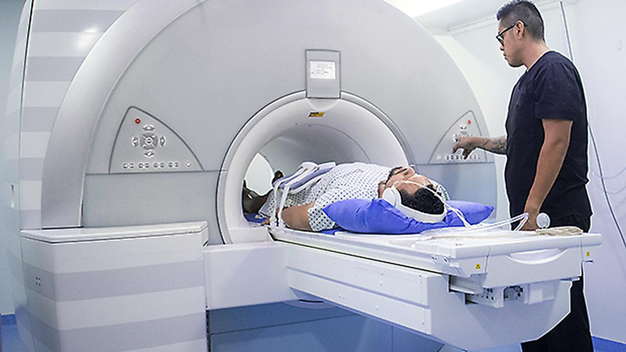- Courses
- GS Full Course 1 Year
- GS Full Course 2 Year
- GS Full Course 3 Year
- GS Full Course Till Selection
- MEP (Mains Enrichment Programme) Data, Facts
- Essay Target – 150+ Marks
- Online Program
- GS Recorded Course
- NCERT- First Ladder
- Polity
- Geography
- Economy
- Ancient, Medieval and Art & Culture AMAC
- Modern India, Post Independence & World History
- Environment
- Governance
- Science & Technology
- International Relations and Internal Security
- Disaster Management
- Ethics
- Current Affairs
- Indian Society and Social Issue
- CSAT
- 5 LAYERED ARJUNA Mentorship
- Public Administration Optional
- ABOUT US
- OUR TOPPERS
- TEST SERIES
- FREE STUDY MATERIAL
- VIDEOS
- CONTACT US
What is Magnetic Resonance Imaging?
What is Magnetic Resonance Imaging?
11-05-2024

Magnetic resonance imaging (MRI) is a valuable tool for examining the human body without surgery. It provides detailed images of soft tissues, which are tissues that haven't hardened due to calcification.
About Magnetic Resonance Imaging:
- Soft Tissue Imaging: MRI is used to get images of soft tissues within the body.
- Non-Invasive Diagnostic Procedure: MRI is a widely used non-invasive diagnostic procedure for imaging various body parts, including the brain, cardiovascular system, spinal cord, joints, muscles, liver, and arteries.
- Applications in Cancer and Neurological Conditions: MRI plays a significant role in observing and treating certain cancers, such as prostate and rectal cancer. It is also useful in tracking neurological conditions like Alzheimer's, dementia, epilepsy, and stroke.
- Magnetic Field Considerations: Due to the use of strong magnetic fields in MRI, individuals with embedded metallic objects (e.g., shrapnel) and metallic implants, including pacemakers, may not be able to undergo MRI scans.
Working of MRI:
- An MRI procedure generates an image of a body part by utilizing the hydrogen atoms within that part.
- It relies on the body's natural magnetic properties to produce detailed images from any part of the body.
- MRI uses the hydrogen nucleus (a single proton) because of its abundance in water and fat.
- The MRI machine includes a superconducting magnet that creates a stable magnetic field, aligning hydrogen atom spins.
- A radiofrequency pulse is emitted, exciting excess atoms.
- After the pulse stops, these atoms emit energy, which is detected and converted into signals by a receiver.
- A computer processes these signals to generate detailed 2D or 3D images of the scanned body part.
Q: What is Calcification?

Calcification is a process where calcium accumulates abnormally in your body's tissues. While calcium is essential for building bones and teeth, abnormal calcification happens when calcium deposits form in soft tissues, blood vessels, or organs. This buildup can cause the affected areas to harden, sometimes disrupting their normal function.
Types of Calcification:
- Dystrophic Calcification:Occurs in damaged or dead tissue. This is often associated with inflammation, injury, or certain diseases.
- Metastatic Calcification:Occurs when you have high levels of calcium in your blood (hypercalcemia). This calcium can form deposits in otherwise healthy tissues.
Where Can Calcification Occur?
Calcification can occur in various parts of the body including:
- Arteries:Calcification of arteries leads to atherosclerosis, a hardening and narrowing of arteries that increases the risk of heart attack and stroke.
- Kidneys:Leads to kidney stones or more severe kidney dysfunction.
- Heart Valves:Can cause narrowing of the valves, making it harder for the heart to pump blood.
- Joints and Tendons:Can cause pain, inflammation, and limited mobility.
Causes of Calcification:
- Aging: Calcification becomes more common as you age.
- Injury or inflammation: Damaged tissues can attract calcium deposits.
- Medical conditions: Kidney disease, hyperparathyroidism, certain cancers, and chronic inflammation can increase calcium levels or disrupt normal calcium processes.
- Genetic disorders: Some rare genetic conditions predispose people to calcification.
Symptoms and Treatment:
Calcification often doesn't cause symptoms in the early stages. As it worsens, symptoms depend entirely on the location of the calcium deposits. Treatment, if needed, focuses on:
- Underlying causes: Addressing issues like high calcium levels or chronic medical conditions.
- Management of symptoms: For example, pain management in joint calcifications.
- Surgical removal: In severe cases of calcifications impacting organ function.



